Cashmere is one of the most luxurious and precious wools on earth. It has an extraordinary feel and experience when worn, and is characterized by its soft, fine, and lightweight fibre. It is the process of obtaining it harmlessly from the Himalayan species of goats that makes Cashmere expensive. Since its advent, pure, and high-quality, Cashmere has enjoyed a high status in the eyes of royalty all around the world. But with the introduction of blended variants, Cashmere became affordable for everyone and lost that reverence and holy status that it held in the past
High-end fashion garments, even now, use Cashmere as their stable raw material. For this reason, it is much popular in the west. The reason for its lush and extravagant nature is its heavenly appearance and feel. Unlike other types of wool, Cashmere is not itchy against the skin. On the contrary, it is blissfully soft, smooth, and feathery light.
Where is Cashmere found?
The largest producer of Cashmere is China followed by Mongolia. These two regions make up for 90% of the Cashmere in the world. diverse breeds of Cashmere producing goats. Each breed has a specific percentage of production in the total production. Several breeds are present in the world viz; Australian Cashmere Goat, Liaoning, Inner Mongolia, Xinjiang, Hexi, Zhonghwei, Tibetan Plateau, Luliang breeds, Changthanghi, etc. Therefore, all the breeds produce the Cashmere wool that produces the warmth. The exclusive breed of goats called Changra Goats is rare species of goats. The finest Cashmere is produced in the Ladakh area of Jammu and Kashmir.
We, at Pashmina.com, make Pashminas with the Cashmere sourced from Ladakh that accounts for just 0.75% of the total Cashmere produced in the world. But its fineness, warmth, and luxurious mien exceed all of the other variants. Therefore, only around 80 to 170 gms of Ladakhi Cashmere are produced during a year. Therefore, considered the rarest. Also, other breeds of it produce several times more as there is almost 400 million Cashmere eliciting Goats all over the world. Consequently, the production caters to the manufacture of different styles like Pashmina Shawls, Cashmere Scarves, and Cashmere Wraps.
An exotic species of goat is found in the high mountain ranges of Ladakh, North India. A place called Changthang which lies over 14000 feet above sea level houses this rare species of goat, which is reared by nomadic herders. It is this goat whose wool has been long utilized to craft luxury shawls, scarves, wraps, and other accessories. The goat grows Cashmere as an undercoat over its underbelly, throat, and behind the ears. It is this wool that is painstakingly combed off gently by professionals and herders together. The process is completely ethical and no animal is hurt during the entire process.
Also read: The Trail of India’s Cashmere Goat Men
How is Cashmere procured?
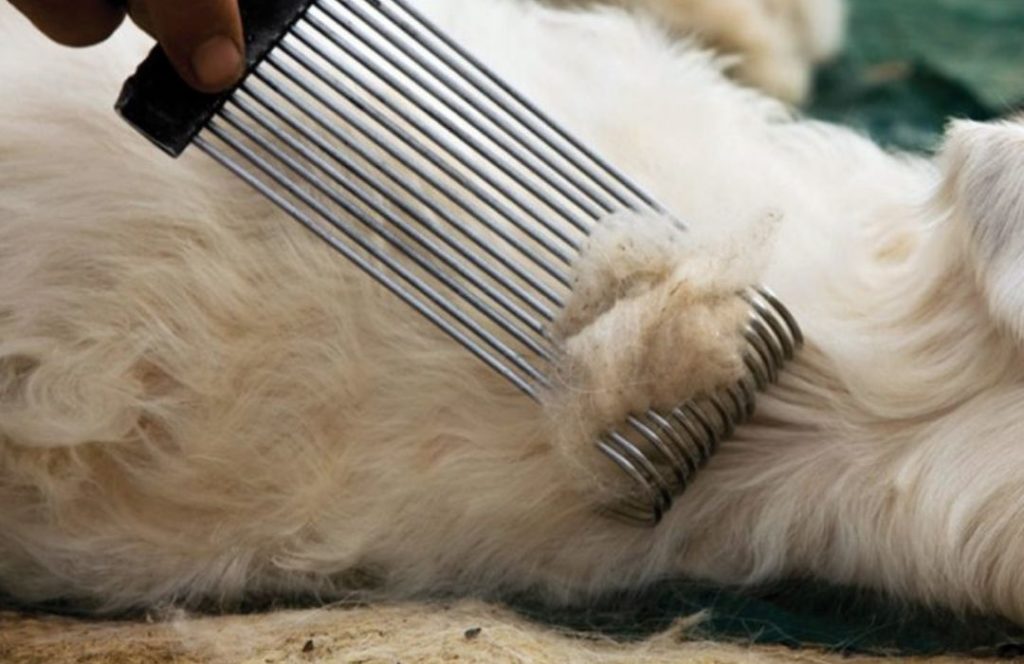
From the Changhthanghi mountain, the beginning of the journey starts. There is the dwelling of rare species of goat called Changra Goats. The Changra goats are medium-sized goats with two twisted horns. These are mainly herded by the tribe of Changpa. In the Changhthanghi region, the temperature goes to -40°C in winter. Thus, the Changra goats develop an undercoat of thick wool over their bodies. Thus, protecting themselves from the harsh climate. The wool is thick and soft. It is called Cashmere wool. The Cashmere wool of Ladakh is the finest among all the production of Cashmere wool. There are several breeds of goats that produce cashmere wool. But, the finest among all is the Ladakhi Cashmere wool.
Therefore, wool from the goat is collected in the Spring season (around April-May). It is the time when the goat naturally sheds its down coat which allows it to stay cooler during the summer months. This natural process allows the cashmere to be extracted without any harm to the goat. The remaining portion of the wool still attached to the goat’s body is gently combed off and packed to be sent for processing.
A single goat produces 4-6 ounces (around 150 grams) of wool per year. Hence to prepare one Cashmere wrap, wool from 3 to 4 goats is considered enough. This wool is spun into yarns manually, and handwoven into luxury apparel, shawls, scarves, etc.
How is the premium Cashmere Crafted?
Pashmina Art is the crafting of the finest Cashmere wool in the sphere of heritage and artisans in Kashmir. Crafting leads to explicit accessories that speak of luxurious fashion in diverse ways. After the tufts of wool reach the Valley of Kashmir, the wool is cleaned and soaked. This signifies the outset of Pashmina Art. Further, the cleaned and soaked wool is dried in nature to preserve the essentiality in its natural form. The cleaned and dried Cashmere wool is distributed to the local households of the Valley. There begins the next step of Pashmina Art, Spinning. Spinning is the translation of fine Cashmere wool to the finest Cashmere yarn on a wooden wheel called yinder. Spinning is mainly done by the womenfolk of the Kashmir Valley.
Moreover, the unique definition of Spinning is acquainted with the essence of precision and diligence. In addition, the Cashmere yarn thus produced confers to the purest and finest yarn of 12 to 16 microns. Thus, the finest Cashmere yarn moves further in the procedure radiating the Art of Pashmina.
Weaving and Designing of the fine Cashmere
After the process of Spinning, the process of transforming Cashmere yarn into fine Cashmere fabric begins. It is done by the process of Weaving. It is the translation of Cashmere yarn to Cashmere fabric. Therefore, the weavers of the Kashmir Valley profoundly weave the fine yarn into the fine fabric on the handloom made of forest wood. The process of weaving is to use Cashmere yarn to create warps and wefts. Thus, producing a whole fine Cashmere fabric.
Therefore, the Cashmere produced is given the required dimensions. Thus, diverse styles like Pashmina Shawls are crafted. After Weaving, the fine Cashmere fabric is given the required dimensions to make it an exquisite accessory for the Pashmina Shawl. There is the process of Dyeing by the dyer in Kashmir to pervade Pashmina Shawls with the tinges of nature. In addition, the Designing begins in Kashmir itself where artisans work manually on each design including patterns, embroideries, embellishments, prints, etc.
Why is Cashmere Expensive?
Cashmere has a number of features that are rare to find and which makes it revered all over the world. Here are some amazing qualities of this luxury fabric and why cashmere is expensive, for which it is cherished by every admirer of slow, responsible, and timeless fashion.
Exceptional Warmth
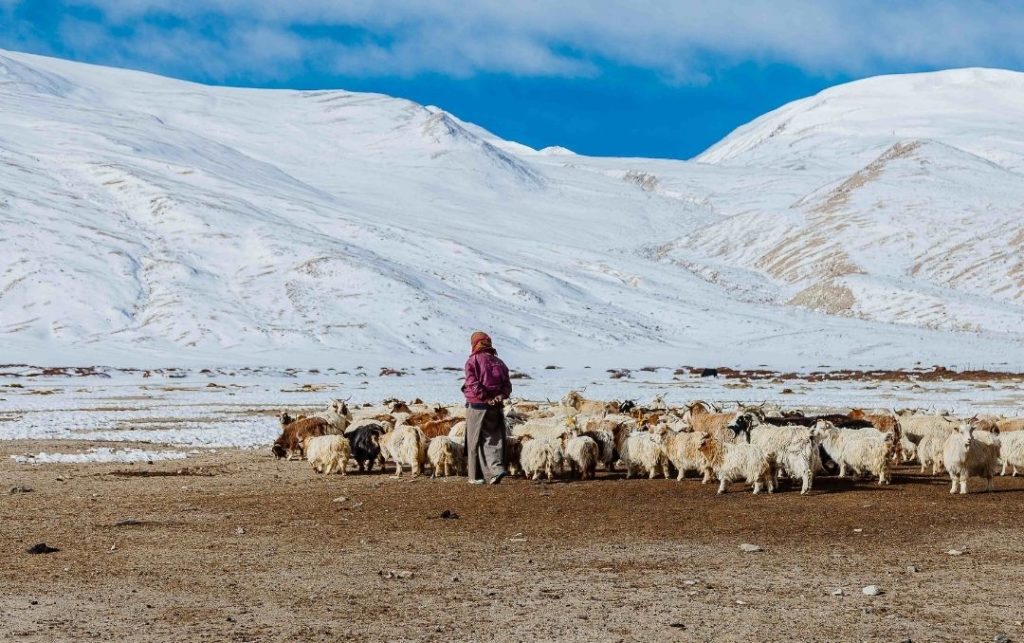
To withstand a temperature of minus 40 degrees in the cold and arid area of Changthang, the goat naturally grows Cashmere as a down fiber. And with the help of this fine fleece, it survives these grim conditions. That is how warm Cashmere is. This extraordinarily soft wool is believed to be eight times warmer than sheep wool, and three times more insulating. In addition to this, even after being so warm, it is feathery light. The warmth is adequate to provide you comfort in the seasons of coldness. Fine Cashmere is extraordinary wool that has the magical qualities of being the finest yet the warmest. Wearing the Pashmina accessories provide life to the moments of grace by admiring grace as well as protecting from the coldness of the season.
Manual Labour
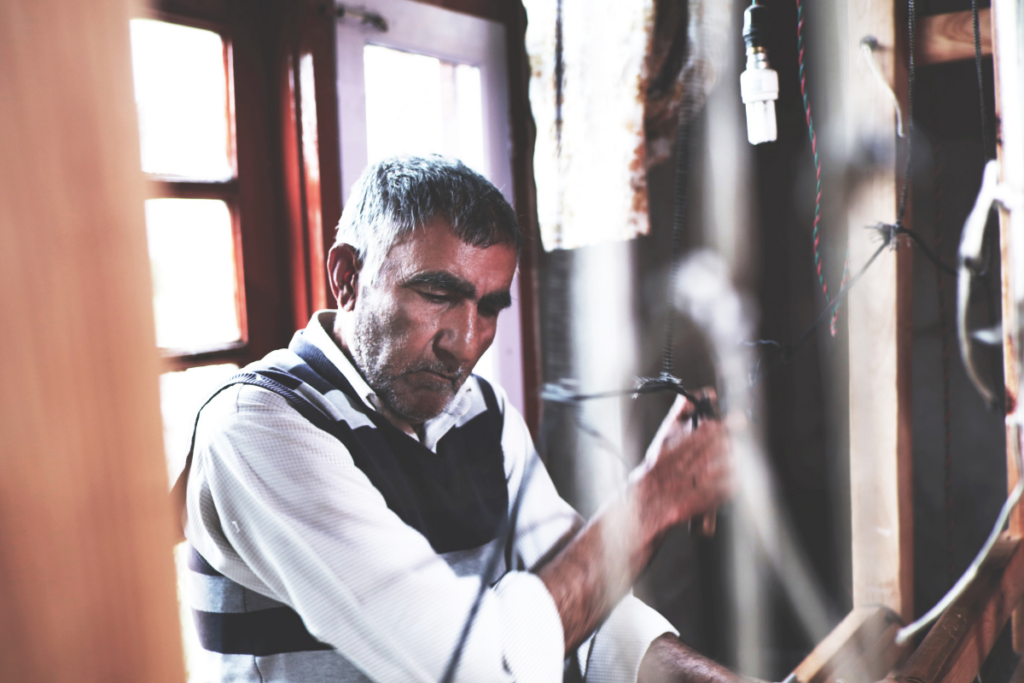
Cashmere acquisition and processing are all manual. Professionals manually comb the goat to acquire it. Later it is manually cleaned by locals, as well as Kashmiri womenfolk. After cleaning, it is handspun over a manual wooden spinning wheel to transform lumps of wool into yarn. Post this, men hand weave it over traditional handlooms for a few days. If a wrap is to be embroidered, it takes months to years for the completion of those complex designs. At Least a total of 100 artisans pour their heart and soul into one piece of wrap, sweater, or any other Cashmere accessory.
Artisans have been into the craft of Pashmina for ages and they work day and night to craft the luxury of any masterpiece of Pashmina. The hand-spinning, hand-weaving, and hand-designing take up to months and years to craft a single piece of Pashmina. The hand-embroideries, hand embellishments, and hand-woven styles are examples of exquisite craftsmanship. Defining the realm of Kashmir, the artisans have upheave the luxury of Pashmina by their pristine hand-skill.
Fineness of the Fibre
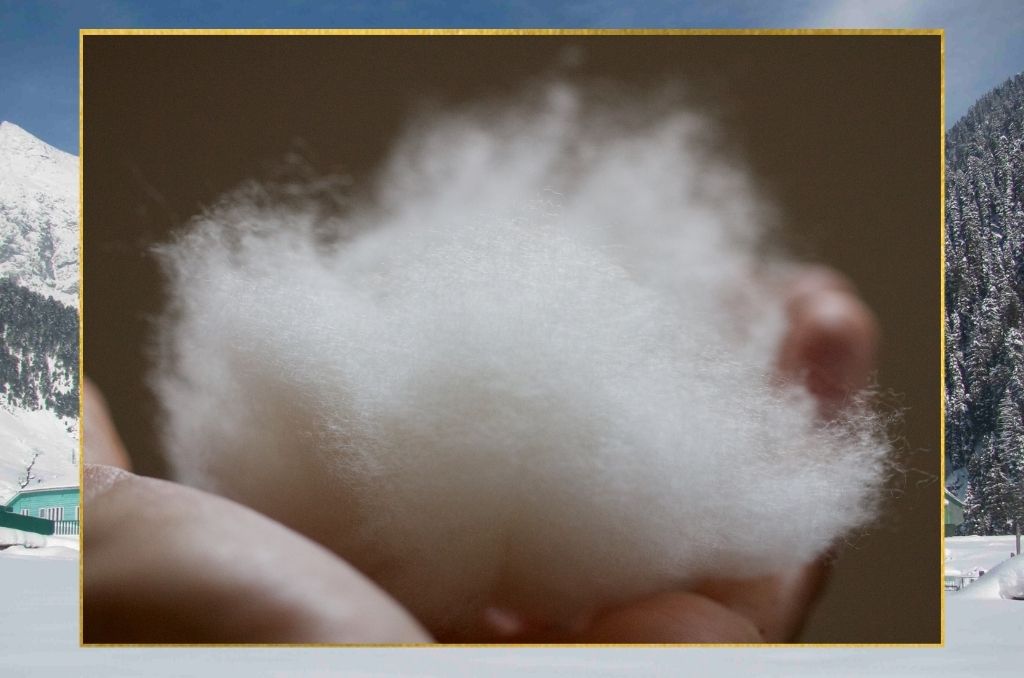
Cashmere, when spun into yarn, gives extremely fine threads of wool. These threads are just 12-16 microns in diameter, which is one-fourth of human hair. This makes Cashmere one of the finest and most lightweight wool types around the world. The fine yarns are so well developed to be worked upon on the handloom to craft the finesse of the Pashmina collection. Beautifully crafted by the hands of artisans, the accessories gracefully get crafted in the valley of Kashmir.
Empowering Underprivileged communities
As many as 50 families are such whose only source of income is Cashmere processing. This doesn't make Cashmere expensive, but more valued and revered by the local community. Womenfolk as well as menfolk of artisans work daily to ensure the greatness of the Pashmina as a craft of heritage. Defining the beatitude of the hand-skill of the artisans, they revive the beauty of Pashmina but suffer under the hands of low wages and no sustenance. Therefore, pashmina.com not only revives the richness of Pashmina but provides sustenance to the artisan community. The part of the amount of each Pashmina accessory supports the unprivileged community in Kashmir to support the human livelihood there.
Limited production
Cashmere is sourced from Ladakh only once a year, as the goat sheds only in the Spring-Summer season. Hence the producers of Cashmere products are dependent only on the quantity that is exported per year. This makes Cashmere products rare and exclusive with a limited supply and a high demand. The Goats produce the fine Cashmere wool once every year. Therefore, only around 80 to 170 gms of Ladakhi Cashmere are produced during a year. Therefore, considered the rarest. Consequently, the production caters to the manufacture of different styles like Pashmina Shawls, Cashmere Scarves, and Cashmere Wraps. Thus, the production is limited as well the collection is rare and one-of-a-kind. It is believed that once you get your hands on Cashmere products, it is hard to switch to any other type of wool. All the reasons makes the Cashmere expensive in its own way.
Also read: Empowering Pashmina Artisans
Are all offerings of the same price?
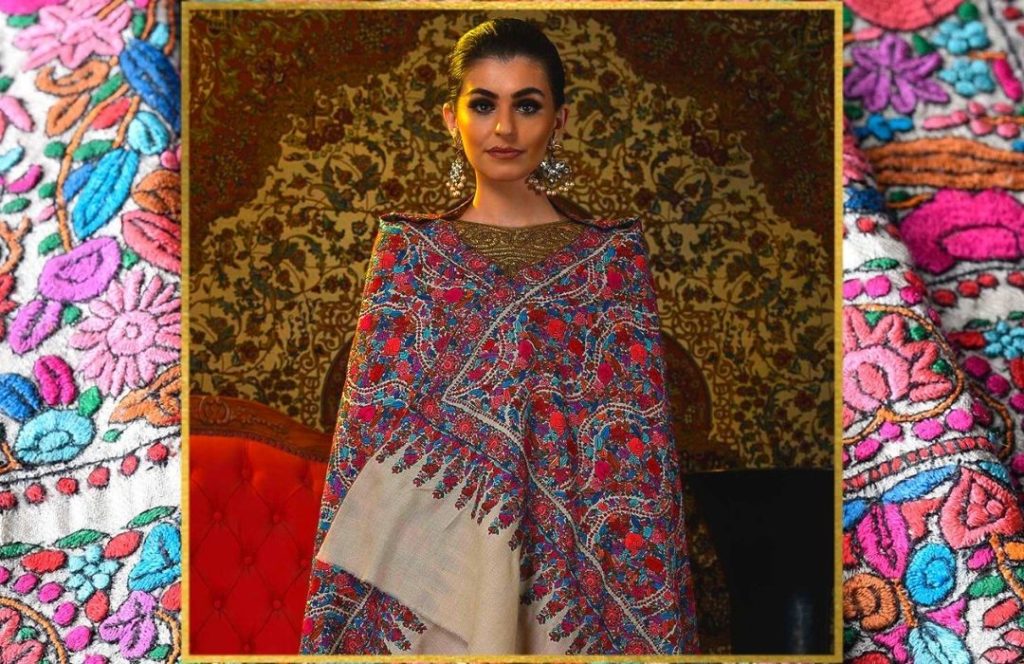
Pricing of Cashmere does depend on the quality and size of the product. But there are some other factors that determine the price of Cashmere.
Sometimes similar looking products are priced differently. But the price variation isn't necessarily due to the difference in purity. There might be other differences as well
- Count: Yarn count is a number indicating the meters of yarn that can be spun per gram. The more yarn-count the thinner, the smoother and more precious is the scarf. This is the reason why Pure Cashmere is more expensive.
- Ply of the fibre used: Ply indicates the density of fibre used. Single-ply cashmere wraps would mean that basic thread is used in its single form. Double-ply or two-ply would indicate that fibre is double twisted. Two-ply cashmere wraps are more expensive than single ply, as more fibre is used to craft it
- Thickness of the fibre: How thick the fibre also determines the price of Cashmere wraps/shawls. The finer the fibre used, the more expensive the cashmere scarf becomes. In fact, it might be surprising, but it is believed that the finer the Cashmere, the warmer it is.
Once you experience the feel of Cashmere, you will know that the prices are very well deserved. Cashmere deserves all the respect and attention as well as a special place in your luxury wardrobe of winter staples.